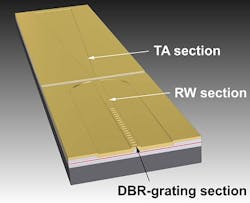Vienna, Austria--The 17 partners who make up the European Union project called Functional Anatomical Molecular Optical Screening (FAMOS) would like to see optical coherence tomography (OCT) being used as widely as positron-emission tomography (PET), computed tomography (CT), and magnetic-resonance imaging (MRI); to further the use of OCT, FAMOS is developing smaller, more efficient OCT laser light sources.
Related: OCT used to spot middle-ear-infection biofilms behind the eardrum
Related: Complementary techniques enhance the power of OCT
Related: Dual-window technique enhances true-color spectroscopic OCT
FAMOS includes European manufacturers of lasers and medical technology, as well as scientists from universities in Vienna, Austria, the University of St. Andrews (Fife, Scotland), London University College, Weizmann Institute (Rehovot, Israel), Technical University of Denmark (Lyngby, Denmark) and the Ferdinand-Braun-Institut (FBH; Berlin, Germany).
Related: Transfer Prize goes to FHB in cooperation with Jenoptik Diode Lab
OCT requires supercontinuum laser light created when a microstructured optical fiber is irradiated with a femtosecond laser. These lasers generate a lot of heat and require water cooling. As a result, the equipment is large, not portable, and, so complicated that it requires an expert to operate it.
The FAMOS laser
"Our task at FBH is to develop a semiconductor laser with very high beam quality," says Bernd Sumpf, head of the FAMOS project at FBH. "Colleagues from Denmark will then frequency-double the light, thus bisecting the wavelength."
The FBH laser includes a distributed Bragg reflector (DBR) and a ridge-waveguide (RW) section in which single-mode radiation is generated; the light is then amplified within a tapered amplifier (TA) section—the tapered laser thus combines excellent beam quality with very high output power (see figure).
The tapered laser will be used by a FAMOS industrial partner in Vienna to pump a femtosecond titanium-sapphire laser, which will excite the white-light OCT source. If everything works out as planned, ambient air will be sufficient for cooling, requiring only a small computer fan; the equipment can be shrunk to a fifth of its current size and as a result be portable and cost-efficient.
Titanium-sapphire lasers are pumped with wavelengths around 500 nm. Up to now, mostly water-cooled 532-nm-emitting solid-state pump lasers have been used. "We decided to use a more efficient shorter wavelength of 515 nm," says Sumpf. The goal is to generate 10 W optical output power at 1030 nm; the wavelength will then be frequency-doubled to 515 nm via a nonlinear crystal.

